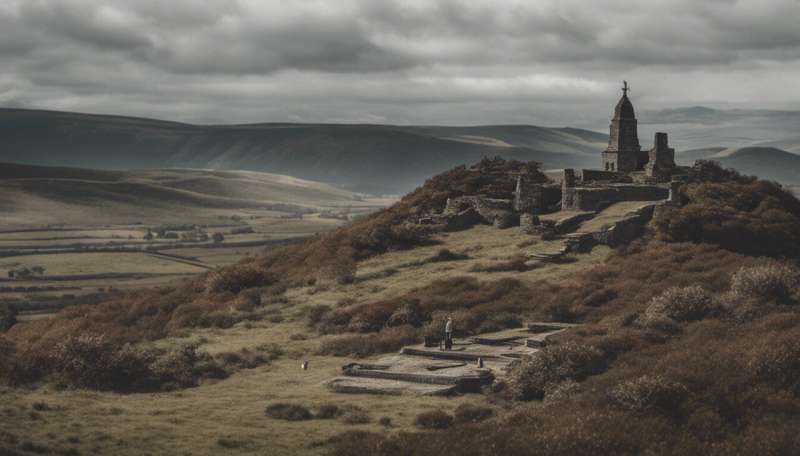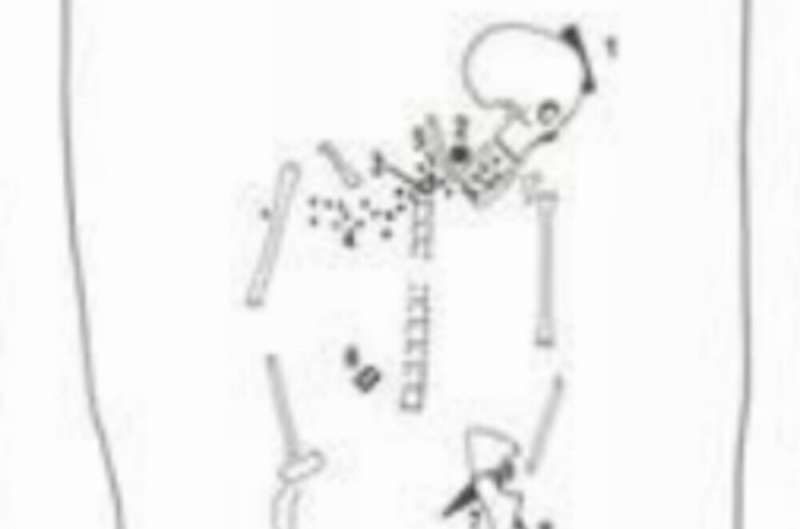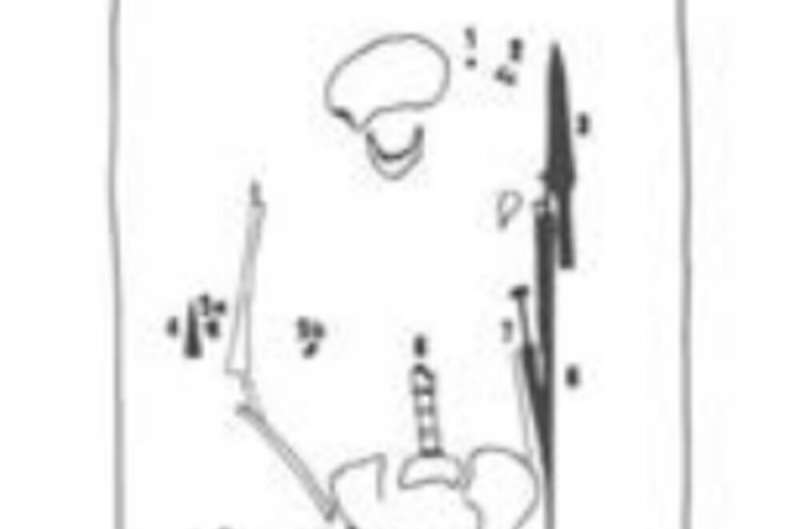This article has been reviewed according to Science X's editorial process and policies. Editors have highlighted the following attributes while ensuring the content's credibility:
fact-checked
trusted source
written by researcher(s)
proofread
The burials that could challenge historians' ideas about Anglo-Saxon gender

There are a significant number of Anglo-Saxon burials where the estimated anatomical sex of the skeleton does not align with the gender implied by the items they were buried with. Some bodies identified as male have been buried with feminine clothing, and some bodies identified as female have been found in the sorts of "warrior graves" typically associated with men.
In the archaeology of early Anglo-Saxon England, weaponry, horse-riding equipment and tools are thought to signal masculinity, while jewelry, sewing equipment and beads signal femininity. And, for the most part, this pattern fits.
So far though, no convincing explanation has been put forward for the burials which appear to invert the pattern. My Ph.D. research asks whether looking at these atypically gendered burials through the lens of trans theory and the 21st-century language of "transness" has the potential to improve historians' understanding of early Anglo-Saxon gender.
Atypically gendered burials are generally excluded as "outliers" in excavation reports and subsequent research. This relies on the anachronistic idea that historical societies followed a system of sex, gender and sexuality aligning with 19th-century western standards.
This idea is so common that many people believe these three aspects of humanity have remained unchanged throughout history. But such an approach may mean that there are aspects of how gender was understood in early Anglo-Saxon England (circa AD450 to 750) that are going unrecognized today.
Using approaches from trans studies—which acknowledge the potential for genders beyond a male-female binary in historical cultures—allows researchers to approach these burials more critically. It also brings these graves—and the lives of the people buried in them—into meaningful historical research, rather than leaving them to be discarded from studies as outliers.
Eleven burials from the fifth to eighth century found in the pre-Christian cemetery of Buckland, Dover were designated as "discrepancies" in their cemetery excavation reports. This was due to a perceived misalignment in the sex of the skeleton and the gender associations of the items they were buried with.
This makes them a good place to begin exploring an interpretation of these burials through the lens of transness, as a possible explanation for this "discrepancy." A closer look at two of these burials, "Grave 30" and "Grave 93," offers insight into the complexities of gender in this period.

Inside Grave 30
The occupant of "Grave 30" was between 35 and 40 years old, buried around AD600, and was designated "definitely male" in the excavation report, based on their skeletal features.
At a depth of 0.61 meters, Grave 30 is especially deep for this period. This suggests they were a person of high status, as the energy expended digging a person's grave reflects the regard in which they were held by their community.
This is further suggested by the person having suffered from five cavities—the result of a high-sugar diet. The absence of enamel hypoplasia (horizontal lines which appear on the teeth during periods of malnutrition) also demonstrates that their access to food was reliable.
In the grave was a bone comb, a silver-gilt brooch, a silver pin, 84 beads, a silver pendant, a buckle, a knife and a set of iron keys—a rich collection which emphasizes their high status.
All of these items are associated with femininity and are anticipated finds in cisgender female graves (burials where a female skeleton is accompanied by artifacts considered feminine). The brooch and pin, for example, were both parts of seventh century feminine clothing.
We will never know exactly who this person was, or how they fit into their community. But taking a trans studies approach to the burial evidence, I can theorize that this could be interpreted as the grave of a wealthy trans woman, who wore fine silver jewelry, ate as well as any of her contemporaries and on her buckled belt proudly bore the large iron keys of the home she managed.

Inside Grave 93
The person in "Grave 93" was also estimated to have died aged between 35 and 40. They were designated "possibly female" in the excavation report, poor preservation not allowing for complete certainty.
Grave 93 is not as deep a grave as 30, but is still large. There is evidence of tooth cavities known as "occlusal fissures," often caused or exacerbated by feminizing hormones, particularly during pregnancy. This evidence supports the designation of the skeleton as female, but doesn't preclude transness as an explanation for this burial in the light of the accompanying artifacts.
This person was buried alongside a sword, a spearhead, fragments of a decorated shield, one glass bead (likely attached to the sword), an iron rod, a bronze band, iron fragments of a buckle and a bronze ring.
The sword makes this one of only 17 graves excavated in the cemetery to contain such a high-status weapon. The combination of weapons is the archetypal assemblage of an Anglo-Saxon "warrior grave."
Again, we will never be able to know for sure who this person was in life. Such a burial does not necessarily signify that the person was a warrior. However, it does indicate that they were of high status and operated in a masculine sphere.
A trans studies reading of the burial evidence suggests this could be interpreted as the grave of a trans man who enjoyed a position of respect in his community, displaying his wealth, masculinity—and perhaps warrior status—through his shield, sword and spear.
There are other possible explanations for these burials. Perhaps the weapons in Grave 93 were family heirlooms, buried with a woman who was the last of that family line, or were the possessions of a "warrior woman" along the lines of Lagertha in the TV series Vikings.
As there are so many variable factors and we can't speak with the people in these burials, any historical theory on gender in this period can only ever be speculative. A trans-exclusionary interpretation of the burial evidence is no less selective—it operates through as modern a lens as a trans-inclusive interpretation and requires just as many assumptions.
While trans-inclusive approaches can't offer a definite explanation for burials which sit outside of a traditional understanding of Anglo-Saxon gender, the insights they offer are equally evidence-based. Bringing these "anomalous" burials out of the footnotes and into mainstream scholarship offers new perspectives into the earliest iteration of the English-speaking world.
Provided by The Conversation
This article is republished from The Conversation under a Creative Commons license. Read the original article.![]()





















